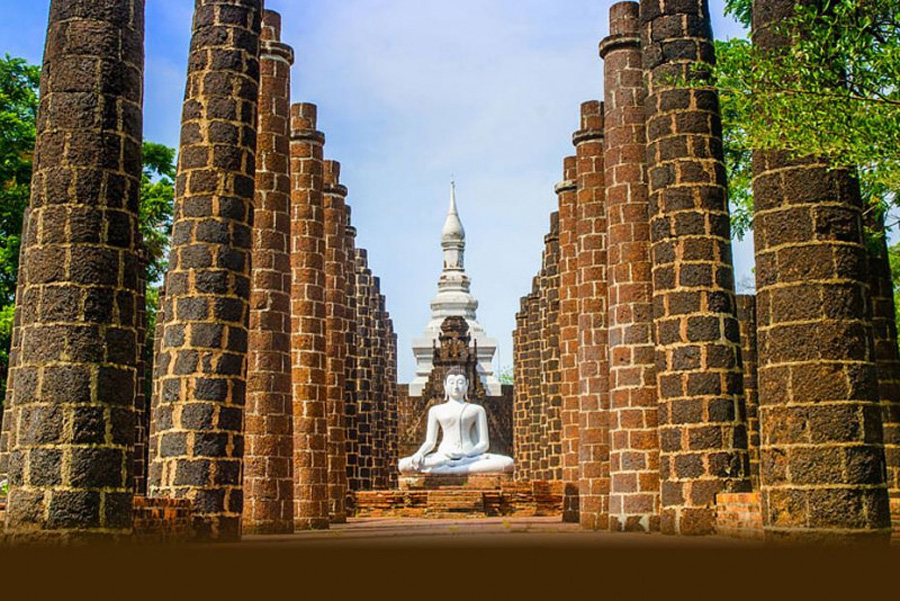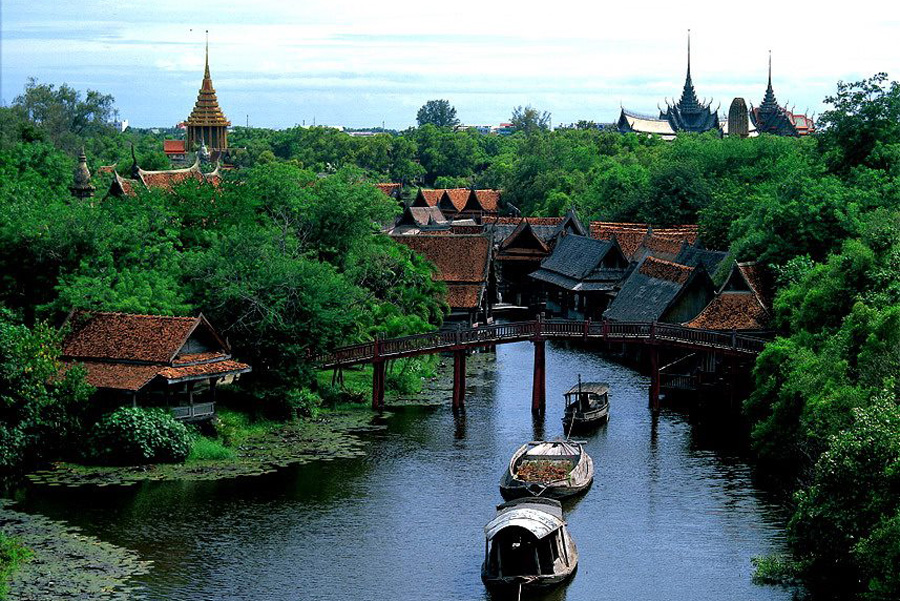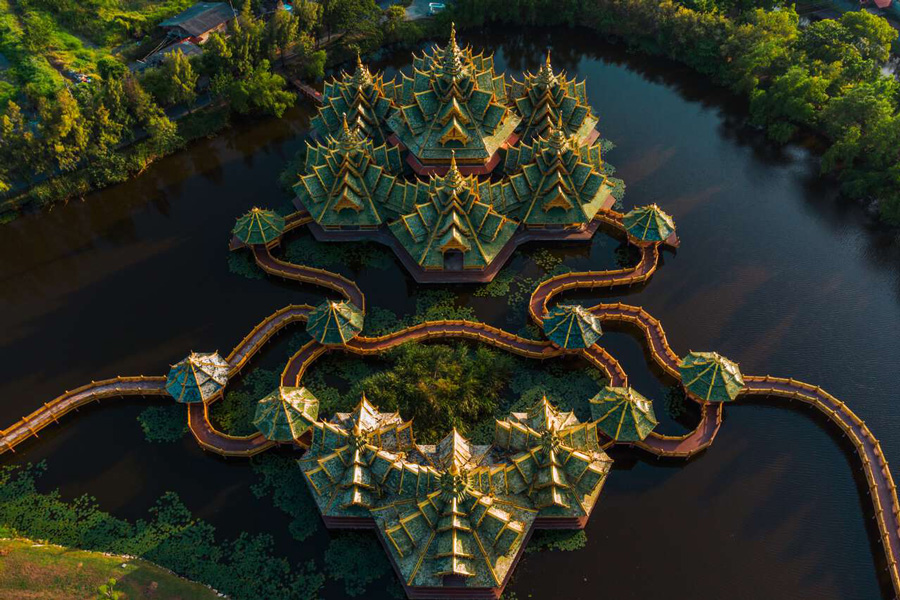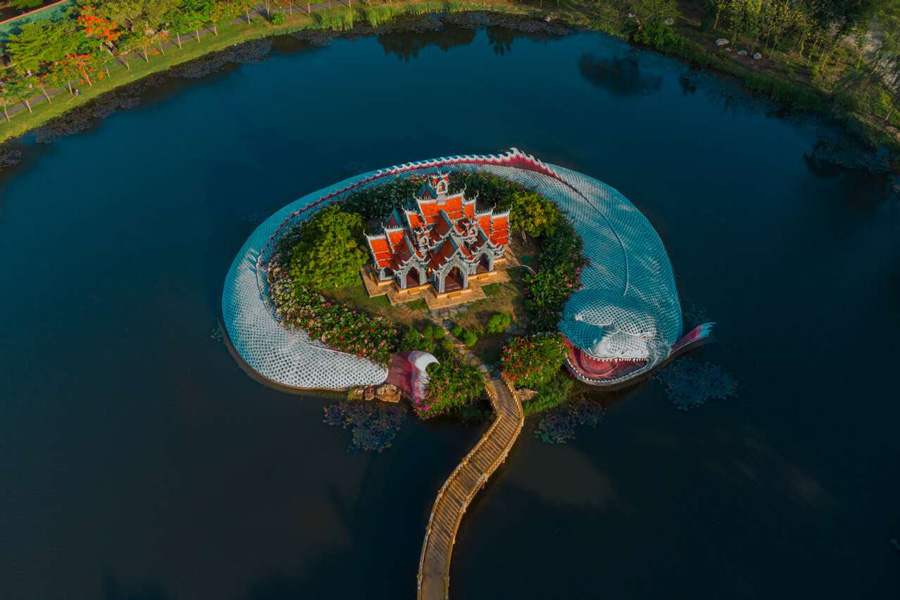Samut Prakan

Samut Prakan, located just south of Bangkok in central Thailand, is a bustling province known for its industrial prowess, cultural heritage, and coastal charm. With a landscape dotted by factories and industrial estates, it serves as a vital hub for manufacturing, shipping, and logistics within the Bangkok Metropolitan Region. Amidst the urban bustle, Samut Prakan preserves its rich cultural heritage through ancient temples like Wat Phra Samut Chedi and Wat Bang Phli Yai Nai, drawing visitors seeking spiritual solace and historical insight.
 The Grand Hall Of Wat Maha That, Sukhothai, Ancient City, Samut Prakan
The Grand Hall Of Wat Maha That, Sukhothai, Ancient City, Samut Prakan
Moreover, its proximity to the Gulf of Thailand ensures an abundance of fresh seafood, which delights both locals and tourists alike at vibrant markets and seaside eateries. Samut Prakan seamlessly blends the dynamism of modern industry with the serenity of ancient traditions, offering a multifaceted experience for travelers exploring Thailand's diverse landscape.
The history of Samut Prakan is deeply intertwined with the development of the region surrounding Bangkok and the Chao Phraya River. Historically, the area that is now Samut Prakan was part of the Khmer Empire's influence, evident from archaeological sites and ruins scattered throughout the province.
 Beautiful architecture in Samut Prakan
Beautiful architecture in Samut Prakan
During the Ayutthaya period (1351–1767), Samut Prakan served as an important trading center and a strategic location for defending the capital against foreign invasions. It was known for its thriving maritime trade along the Chao Phraya River and the Gulf of Thailand.
In the 19th century, during the reign of King Rama IV (King Mongkut), Samut Prakan experienced further development, particularly in the areas of agriculture and commerce. The province's proximity to Bangkok facilitated its growth as an industrial and transportation hub, especially with the advent of the modernization efforts undertaken during the reign of King Rama V (King Chulalongkorn).
 Muang Boran Samut Prakan
Muang Boran Samut Prakan
During the 20th century, Samut Prakan continued to flourish economically, with the establishment of industrial estates and the expansion of port facilities along the Chao Phraya River and the Gulf of Thailand. The province became known for its manufacturing industries, including textiles, ceramics, and food processing.
Today, Samut Prakan remains a vital part of the Bangkok Metropolitan Region, contributing significantly to Thailand's economy through its industrial activities, port facilities, and cultural tourism. The province's rich history, evident in its ancient temples, archaeological sites, and traditional way of life, continues to attract visitors interested in exploring Thailand's past and present.
You may also like: Yi Peng Lantern Festival 2024: Embracing the Latest Updates
The best time to visit Samut Prakan, like much of Thailand, is during the dry and cool season, which typically runs from November to February. During this time, the weather is generally pleasant, with lower humidity and cooler temperatures, making outdoor activities more enjoyable.
 Unique and creative architecture
Unique and creative architecture
In contrast, the wet season, which spans from May to October, can bring heavy rainfall and occasional flooding, particularly in low-lying areas near rivers and the coast. While some travelers may still find the wet season manageable, it's worth considering that certain outdoor activities and sightseeing may be affected by the rain.
March to April marks the hot season in Thailand, including Samut Prakan, characterized by high temperatures and humidity. While this time of year can be suitable for visitors who don't mind the heat, it's essential to stay hydrated and take precautions against sunburn and heat-related illnesses.
Ultimately, the dry and cool season from November to February is generally considered the best time to visit Samut Prakan for a comfortable and enjoyable experience. However, if you don't mind occasional rain and higher temperatures, other times of the year can still offer unique opportunities to explore the province's attractions and culture.
Getting to Samut Prakan is convenient thanks to its proximity to Bangkok and its well-connected transportation network. Visitors can easily reach the province by various means, including air, train, bus, and taxi or ride-hailing services. Suvarnabhumi Airport in Bangkok serves as the nearest major airport, providing international and domestic flights, with options for taxis and shuttle buses for onward travel. For those opting for rail travel, Hua Lamphong Railway Station offers Eastern Line trains heading towards Samut Prakan, with Samrong Station serving as a convenient stop near the province's border. Public buses departing from Bangkok's Southern and Eastern Bus Terminals provide budget-friendly transportation options, though travel times may vary depending on traffic conditions. Alternatively, taxis and ride-hailing services offer direct and flexible travel to Samut Prakan from anywhere in Bangkok. Once in the province, visitors can easily explore its attractions using local transportation options like taxis, tuk-tuks, and songthaews, ensuring a seamless and enjoyable travel experience.
You may also like: Top Famous Art Museums in Thailand